Arrow Electronics Bundle
Can Arrow Electronics Maintain Its Dominance in the Electronics Industry?
From its humble beginnings in 1935, Arrow Electronics has transformed into a global powerhouse, currently holding the title of the world's largest electronics distributor. With 2024 sales soaring to $28 billion and a prominent position on the 2025 Fortune 500 list, the company's journey is a testament to its strategic prowess. This article delves into the Arrow Electronics SWOT Analysis, exploring its growth strategy and future prospects.
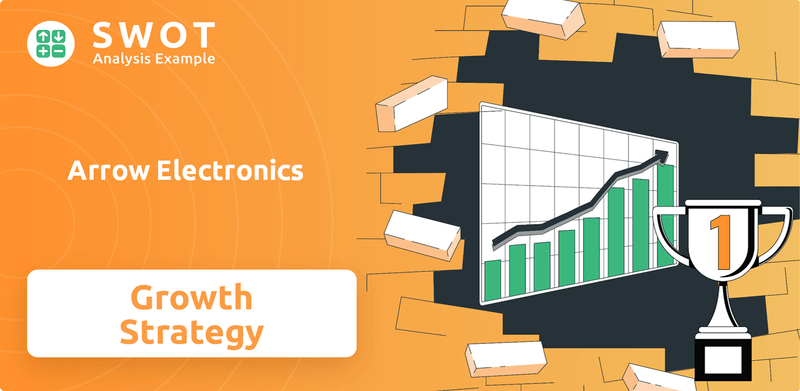
This comprehensive market analysis will examine Arrow Electronics' strategic initiatives, including its expansion plans and technological advancements, offering a glimpse into its future. We'll explore the company's financial performance, potential risks, and how it plans to navigate the evolving landscape of electronics distribution and technology solutions. Understanding Arrow Electronics' growth strategy is crucial for anyone interested in the future of the electronics component supply chain and potential investment opportunities.
How Is Arrow Electronics Expanding Its Reach?
Arrow Electronics is actively pursuing a robust growth strategy, focusing on expansion initiatives to strengthen its market position. The company is strategically entering new markets, broadening its product and service offerings, and leveraging partnerships to fuel its growth. This multifaceted approach is designed to capitalize on emerging opportunities and maintain a competitive edge in the electronics distribution and technology solutions sectors.
A key element of Arrow's expansion strategy involves enhancing its capabilities in high-growth areas like AI, cloud, and security. The company is also focused on expanding its value-added services to meet the evolving needs of its customers. These initiatives are supported by strategic acquisitions and the development of innovative solutions, allowing Arrow to diversify its revenue streams and adapt to industry changes.
The company's Enterprise Computing Solutions (ECS) segment has been a significant driver of growth, benefiting from the increasing adoption of cloud solutions and hybrid work IT trends. Arrow's cloud marketplace and management platform, ArrowSphere, is a crucial component of its ECS strategy, providing cloud solutions to businesses globally. This focus on cloud services positions Arrow well to capture a larger share of the growing market.
Arrow Electronics is expanding its global footprint by entering new markets and increasing its presence in existing ones. This includes targeting regions with high growth potential in electronics distribution and technology solutions. The company's focus on geographic expansion is supported by strategic partnerships and acquisitions.
Arrow is enhancing its product and service offerings to meet the evolving needs of its customers. This involves expanding value-added services in areas like AI, cloud, and security. The company is also investing in new technologies and solutions to provide comprehensive offerings to its customers.
Arrow is leveraging strategic partnerships to enhance its capabilities and expand its market reach. These partnerships enable the company to offer a broader range of solutions and services. Collaborations with key technology providers are a crucial part of Arrow's growth strategy.
Acquisitions are a key component of Arrow's growth strategy, allowing the company to quickly expand its capabilities and market presence. The acquisition of iQmine is a prime example of how Arrow is expanding its expertise in the automotive and transportation industries. These acquisitions help Arrow access new customers and diversify revenue streams.
In March 2025, Arrow Electronics expanded its private label managed, professional, and implementation services portfolio in North America. This initiative aims to help channel partners boost recurring revenue streams and capitalize on technology trends. This expansion allows channel partners to offer comprehensive solutions under their own brand, providing flexibility and competitive pricing.
- ArrowSphere: A key platform for cloud solutions, contributing significantly to the ECS segment's performance.
- Value-Added Services: Expansion in areas such as AI, cloud, and security to meet evolving customer needs.
- Strategic Acquisitions: Like iQmine, to bolster capabilities and market presence, particularly in high-growth sectors.
- Automotive Centre of Excellence: Expansion with new development centers in Munich and Istanbul.
The company's strategic initiatives are designed to drive sustainable growth and adapt to the dynamic changes in the electronics industry. For more on the company's history, you can read a Brief History of Arrow Electronics. These efforts are aimed at improving Arrow Electronics' financial performance and increasing its market share. The company's focus on innovation and strategic investments positions it well for continued success in the future.
Arrow Electronics SWOT Analysis
- Complete SWOT Breakdown
- Fully Customizable
- Editable in Excel & Word
- Professional Formatting
- Investor-Ready Format
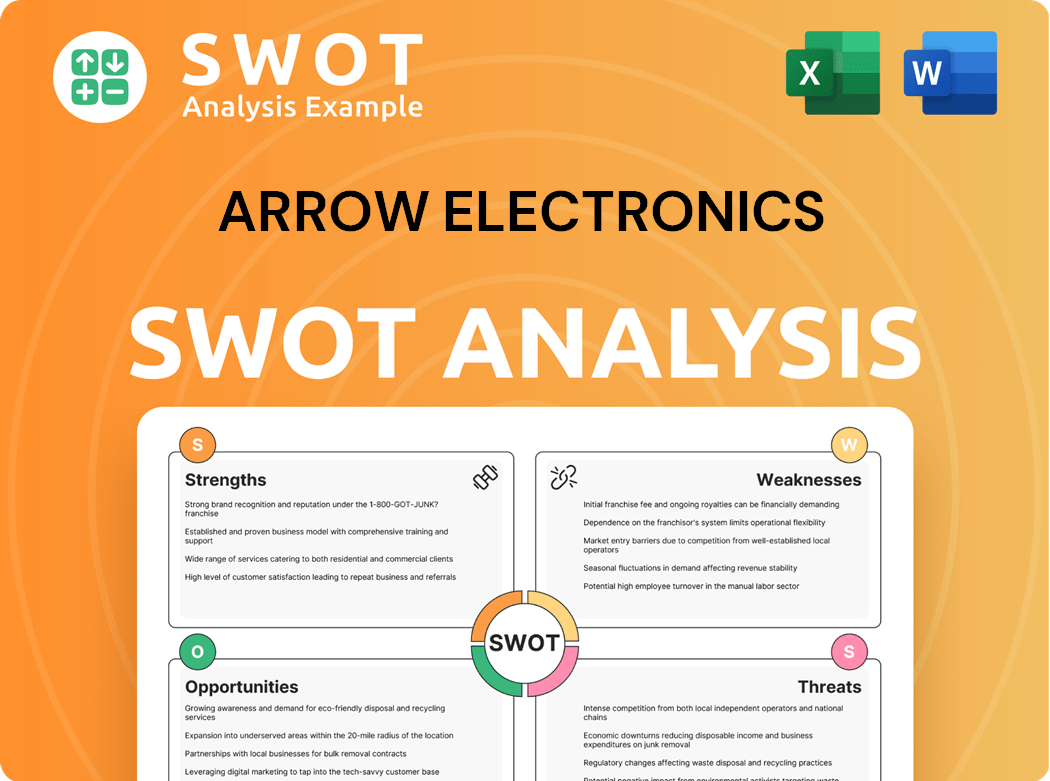
How Does Arrow Electronics Invest in Innovation?
Arrow Electronics focuses on innovation and technology to achieve sustained growth. The company strategically invests in digital transformation and adopts cutting-edge technologies to enhance its supply chain capabilities and customer interactions. This approach is crucial for navigating the dynamic electronics distribution market and ensuring future prospects.
The company's commitment to innovation is evident in its investments in AI-driven supply chain analytics and its support for channel partners in areas like AI, cloud, and security technologies. These efforts are designed to meet the evolving demands of the market and maintain a competitive edge. Understanding the Target Market of Arrow Electronics is crucial for aligning technology solutions with customer needs.
Arrow's digital transformation strategy includes platforms like Arrow.com and Verical, which offer innovative solutions for managing end-of-life parts, streamlining ordering, and utilizing global inventories. These platforms are powered by APIs, emphasizing a 'digital supply-chain' approach to meet customer demands efficiently. This strategic focus is essential for long-term growth and adapting to market changes.
Arrow uses AI-driven supply chain analytics to improve efficiency and risk management. This technology helps in anticipating potential disruptions and optimizing inventory management. This is a key element of their growth strategy.
The company is heavily invested in digital transformation across its operations. Platforms like Arrow.com and Verical are central to this, offering streamlined services and global inventory access. This enhances customer experience and operational efficiency.
In August 2024, Arrow opened a new command center in Arapahoe County, Colorado. This center uses AI and human intelligence to provide real-time monitoring of the global supply chain. This helps in mitigating risks related to geopolitical events and natural disasters.
Arrow actively supports its channel partners in adopting AI, cloud, and security technologies. This support includes providing the necessary tools and expertise. This strategy helps in expanding their market reach.
The company emphasizes providing end-to-end solutions rather than just product sales. This approach helps in building stronger customer relationships and ensuring long-term growth. This strategy is crucial for the future of electronics component supply chain.
Arrow's strategic acquisitions, such as iQmine, demonstrate its commitment to integrating advanced technologies. These acquisitions help in expanding their service portfolio and engineering expertise. This is a key element of their expansion plans.
Arrow's technological capabilities include AI-driven supply chain analytics, digital platforms, and support for channel partners in emerging technologies. These initiatives are designed to enhance supply chain management and customer service.
- AI-Driven Analytics: Utilizing AI to predict and mitigate supply chain disruptions.
- Digital Platforms: Leveraging platforms like Arrow.com and Verical for streamlined operations.
- Channel Partner Support: Assisting partners in adopting AI, cloud, and security technologies.
- Strategic Acquisitions: Integrating advanced technologies and expertise through acquisitions like iQmine.
Arrow Electronics PESTLE Analysis
- Covers All 6 PESTLE Categories
- No Research Needed – Save Hours of Work
- Built by Experts, Trusted by Consultants
- Instant Download, Ready to Use
- 100% Editable, Fully Customizable
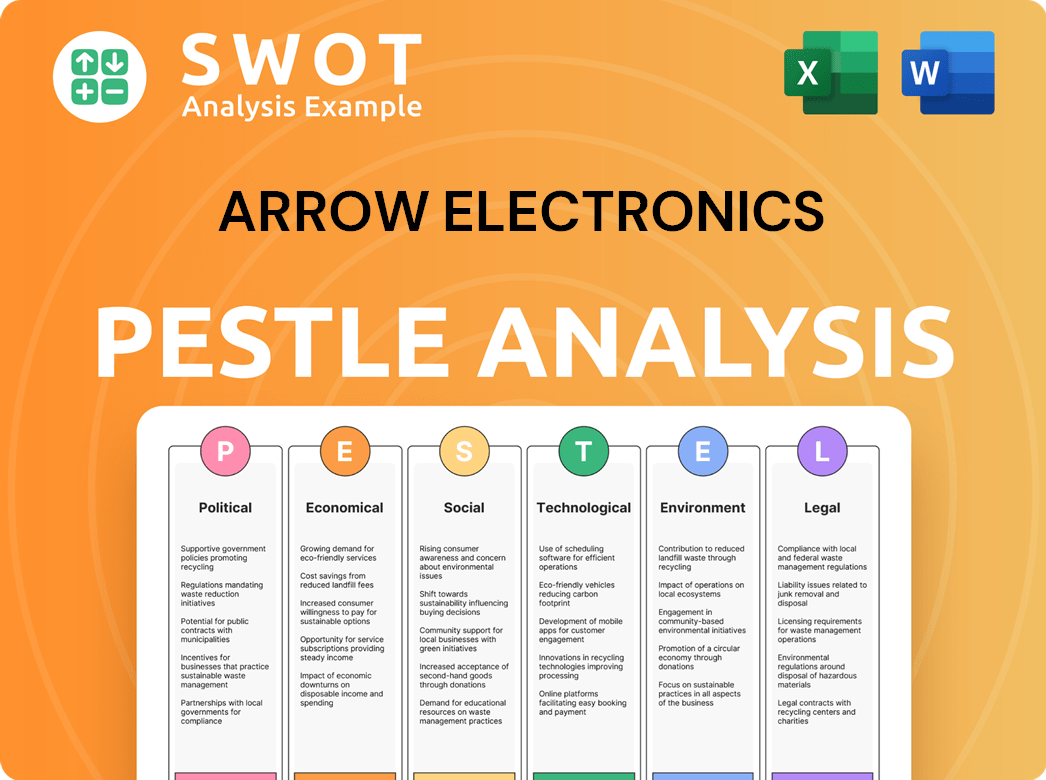
What Is Arrow Electronics’s Growth Forecast?
The financial outlook for Arrow Electronics in 2025 reflects a strategic approach to navigate current market dynamics while capitalizing on growth opportunities. The company's performance in the first quarter of 2025 showed resilience, with sales exceeding the Zacks Consensus Estimate.
The company's guidance for the second quarter of 2025 provides insights into expected sales and earnings. While the Global Components segment faces challenges, the Global Enterprise Computing Solutions (ECS) segment continues to show strength.
For the full year 2024, Arrow Electronics reported a decrease in total sales and net income. However, the company generated significant cash flow from operations and efficiently managed its working capital. Arrow also returned capital to shareholders through stock repurchases.
In Q1 2025, Arrow Electronics reported consolidated sales of $6.81 billion, a 1.6% year-over-year decline. However, this figure surpassed the Zacks Consensus Estimate by 7.93%. Non-GAAP diluted earnings per share were $1.80, also exceeding analyst estimates.
For Q2 2025, the company projects consolidated sales between $6.70 billion and $7.30 billion. Global Components sales are expected to be between $4.80 billion and $5.20 billion, while Global ECS sales are projected to range from $1.90 billion to $2.10 billion. Non-GAAP diluted earnings per share are anticipated to be between $1.90 and $2.10.
For the full year 2024, total sales were $27.92 billion, a decrease from $33.11 billion in 2023. Net income attributable to shareholders was $392 million, down from $904 million in 2023. The company generated over $1.1 billion in cash flow from operations in 2024.
Arrow Electronics maintains a strong balance sheet. As of March 29, 2025, long-term debt stood at $2.31 billion, a decrease from $2.77 billion at the end of the previous quarter. Cash and cash equivalents totaled $231.9 million as of March 29, 2025.
Analysts forecast that Arrow Electronics' mission and financial strategies will drive earnings growth of 28% and revenue growth of 6.5% per annum, with EPS expected to grow by 31.7% per annum. The Global ECS segment is positioned to benefit from ongoing trends in cloud adoption and hybrid work environments.
The Global Components segment faces cyclical demand challenges and excess inventory. However, the Global ECS segment continues to show robust growth.
In 2024, Arrow generated over $1.1 billion in cash flow from operations. The company also reduced inventory by $1.1 billion and returned $250 million to shareholders through stock repurchases.
As of March 29, 2025, long-term debt was $2.31 billion, and cash and cash equivalents were $231.9 million. The company's balance sheet remains strong.
Analysts forecast significant earnings and revenue growth. EPS is expected to grow by 31.7% per annum.
The company is focusing on stabilizing performance and leveraging growth opportunities, particularly in the Global ECS segment.
The electronics distribution industry is competitive, but Arrow Electronics' strategic initiatives and strong financial position provide a solid foundation for future growth.
Arrow Electronics Business Model Canvas
- Complete 9-Block Business Model Canvas
- Effortlessly Communicate Your Business Strategy
- Investor-Ready BMC Format
- 100% Editable and Customizable
- Clear and Structured Layout
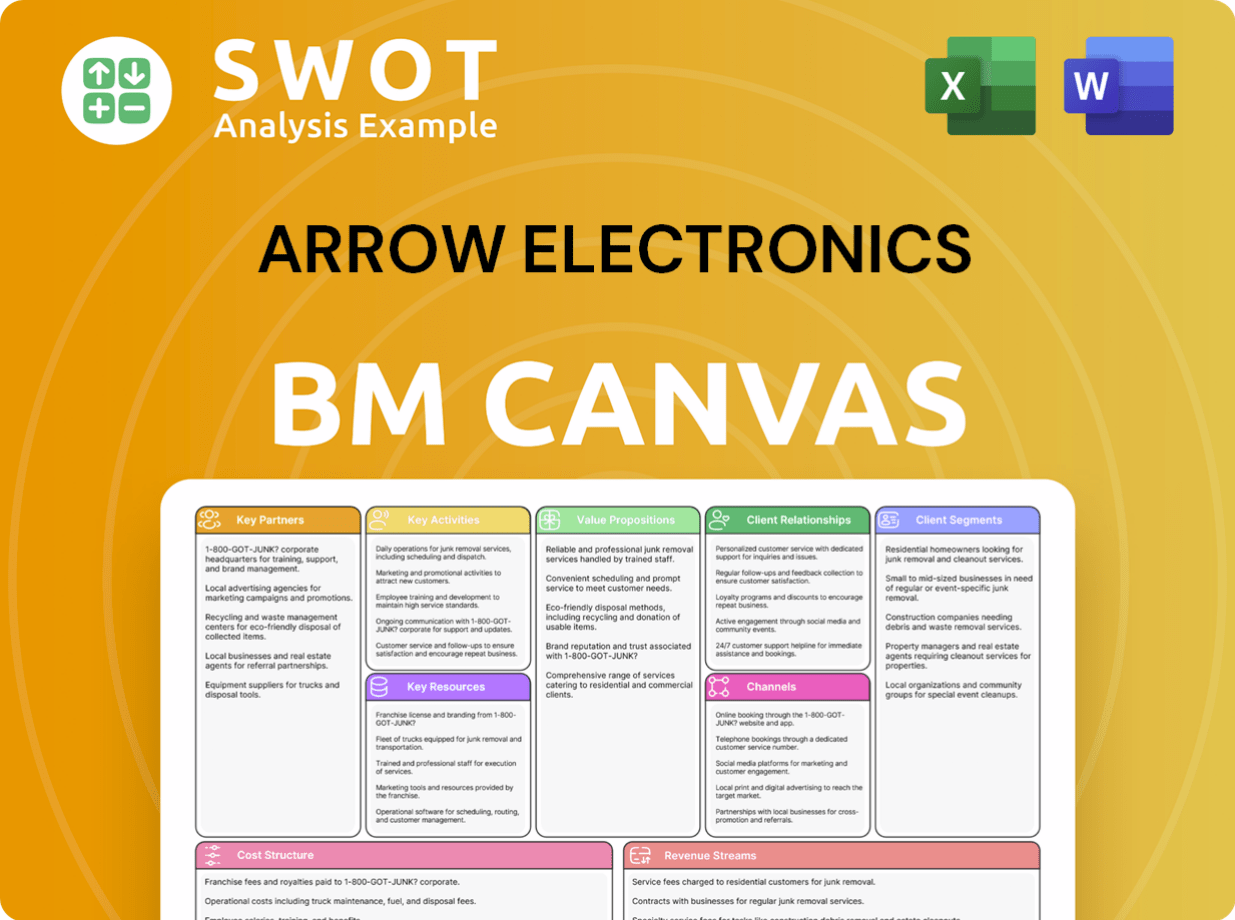
What Risks Could Slow Arrow Electronics’s Growth?
The path forward for Arrow Electronics, while promising, is fraught with potential pitfalls. Understanding these risks is crucial for investors and stakeholders. The company's success hinges on navigating a complex landscape of market dynamics, operational challenges, and external pressures.
One of the most significant obstacles is the cyclical nature of the electronics components market. This inherent volatility can lead to unpredictable demand and impact financial performance. Moreover, the company must contend with intense competition and evolving regulatory landscapes.
Geopolitical risks and supply chain disruptions also pose considerable threats. These factors can impact product costs, availability, and overall operational efficiency. The company's strategic initiatives, while designed to mitigate these risks, also carry their own set of challenges.
The electronics components market is inherently cyclical. Demand fluctuations can significantly impact sales and profitability. In Q1 2025, Global Components sales decreased by 8% year-over-year, highlighting this vulnerability.
Intense competition in the electronics distribution sector can squeeze profit margins. Maintaining a competitive edge requires continuous innovation and cost management. The company must differentiate itself through value-added services and strategic partnerships.
Geopolitical events and trade policies can disrupt supply chains, affecting product costs and availability. Tariffs introduced in 2018 serve as a pertinent example. The company's new command center aims to address these vulnerabilities.
The multi-year 'Operating Expense Efficiency Plan' initiated in 2024, involving workforce reduction, carries risks. These include impacts on employee morale and difficulties in attracting and retaining skilled personnel. Operational costs may increase in certain regions.
Increasing regulations, particularly in ESG (Environmental, Social, and Governance) areas, may require additional compliance frameworks. This can lead to increased costs and operational complexities. Adapting to these changes is crucial for long-term sustainability.
Excess inventory in the supply chain can tie up capital and impact profitability. Declining Return on Invested Capital (ROIC) is a key concern. Managing inventory levels and improving capital efficiency are critical for sustainable growth.
Despite these challenges, Arrow Electronics has demonstrated resilience. The company's focus on value-added services and high-growth areas like hybrid cloud and AI solutions is a key part of its Owners & Shareholders of Arrow Electronics strategy. Diversification efforts also play a vital role in mitigating risks.
A thorough market analysis reveals the competitive pressures faced by Arrow Electronics. Understanding the dynamics of the electronics distribution sector, including the strategies of key competitors, is essential for sustained growth. The company’s ability to adapt to market changes will be a key factor.
Arrow Electronics Porter's Five Forces Analysis
- Covers All 5 Competitive Forces in Detail
- Structured for Consultants, Students, and Founders
- 100% Editable in Microsoft Word & Excel
- Instant Digital Download – Use Immediately
- Compatible with Mac & PC – Fully Unlocked
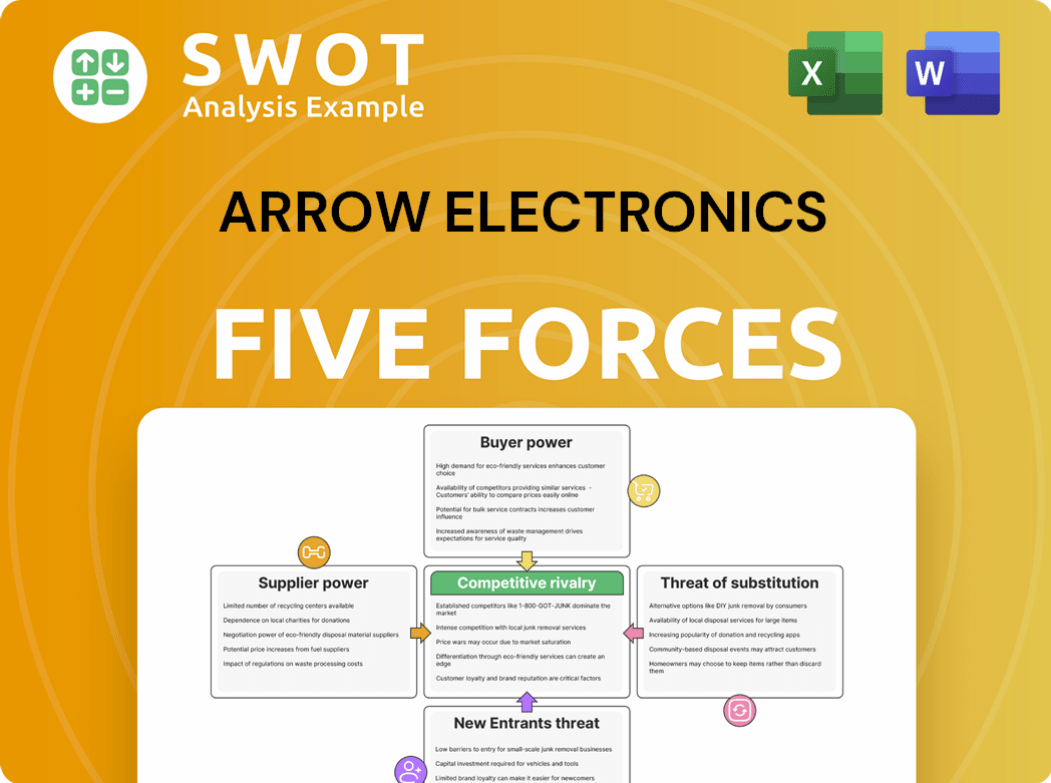
Related Blogs
- What are Mission Vision & Core Values of Arrow Electronics Company?
- What is Competitive Landscape of Arrow Electronics Company?
- How Does Arrow Electronics Company Work?
- What is Sales and Marketing Strategy of Arrow Electronics Company?
- What is Brief History of Arrow Electronics Company?
- Who Owns Arrow Electronics Company?
- What is Customer Demographics and Target Market of Arrow Electronics Company?
Disclaimer
All information, articles, and product details provided on this website are for general informational and educational purposes only. We do not claim any ownership over, nor do we intend to infringe upon, any trademarks, copyrights, logos, brand names, or other intellectual property mentioned or depicted on this site. Such intellectual property remains the property of its respective owners, and any references here are made solely for identification or informational purposes, without implying any affiliation, endorsement, or partnership.
We make no representations or warranties, express or implied, regarding the accuracy, completeness, or suitability of any content or products presented. Nothing on this website should be construed as legal, tax, investment, financial, medical, or other professional advice. In addition, no part of this site—including articles or product references—constitutes a solicitation, recommendation, endorsement, advertisement, or offer to buy or sell any securities, franchises, or other financial instruments, particularly in jurisdictions where such activity would be unlawful.
All content is of a general nature and may not address the specific circumstances of any individual or entity. It is not a substitute for professional advice or services. Any actions you take based on the information provided here are strictly at your own risk. You accept full responsibility for any decisions or outcomes arising from your use of this website and agree to release us from any liability in connection with your use of, or reliance upon, the content or products found herein.